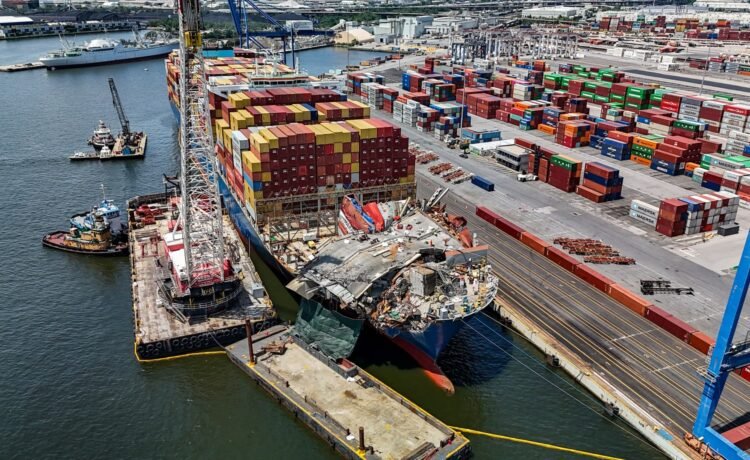Salvage crews continue to work on removing debris from the Francis Scott Key Bridge collapse after it was struck by the container ship Dali, now docked at Seagirt Marine Terminal in Baltimore. (Jerry Jackson/Baltimore Sun/Tribune News Service via Getty Images)
Jerry Jackson | Baltimore Sun | Getty Images
The main passageway into the Baltimore port was fully restored after the March 26 collapse of the Francis Scott Key Bridge, which left six people dead and obstructed maritime traffic into the harbor.
The bridge toppled in late March, after the cargo ship Dali crashed into the infrastructure, choking a major shipping artery into the U.S.’ busiest auto port.
The Port of Baltimore processed a record 1.1 million containers and $80.8 billion in foreign cargo value last year, according to state data. Six highway construction crew members who were carrying out overnight road works plunged to their deaths during the incident.
On Monday evening, the U.S. Army Corps of Engineers said that the Fort McHenry Federal Channel was reinstated to its original operational dimensions of 700 feet wide and 50 feet deep for commercial transit through the Port of Baltimore.
“We’ve cleared the Fort McHenry Federal Channel for safe transit. USACE will maintain this critical waterway as we have for the last 107 years,” said Col. Estee Pinchasin, Baltimore District commander, in a statement.
The restoration follows a clean-up process that started on March 30 and removed about 50,000 tons of bridge wreckage from the Patapsco River, allowing for the gradual reopening of the channel in the weeks since.
On May 20, authorities were able to refloat and remove the 300-meter-long (984-feet-long) Dali, which had been stranded for nearly two months under the wreckage.
The vessel, chartered by Danish shipping giant Maersk, was headed to Baltimore from Sri Lanka when it “experienced a loss of electrical power and propulsion and struck the southern pier supporting the central truss spans of the Francis Scott Key Bridge,” according to a preliminary investigation report of the U.S. National Transportation Safety Board.
















